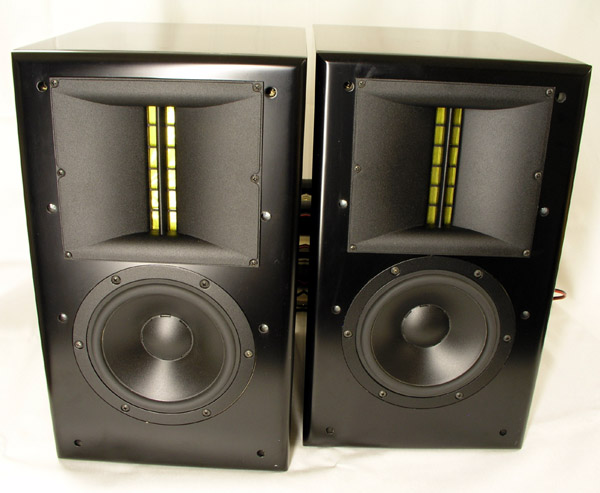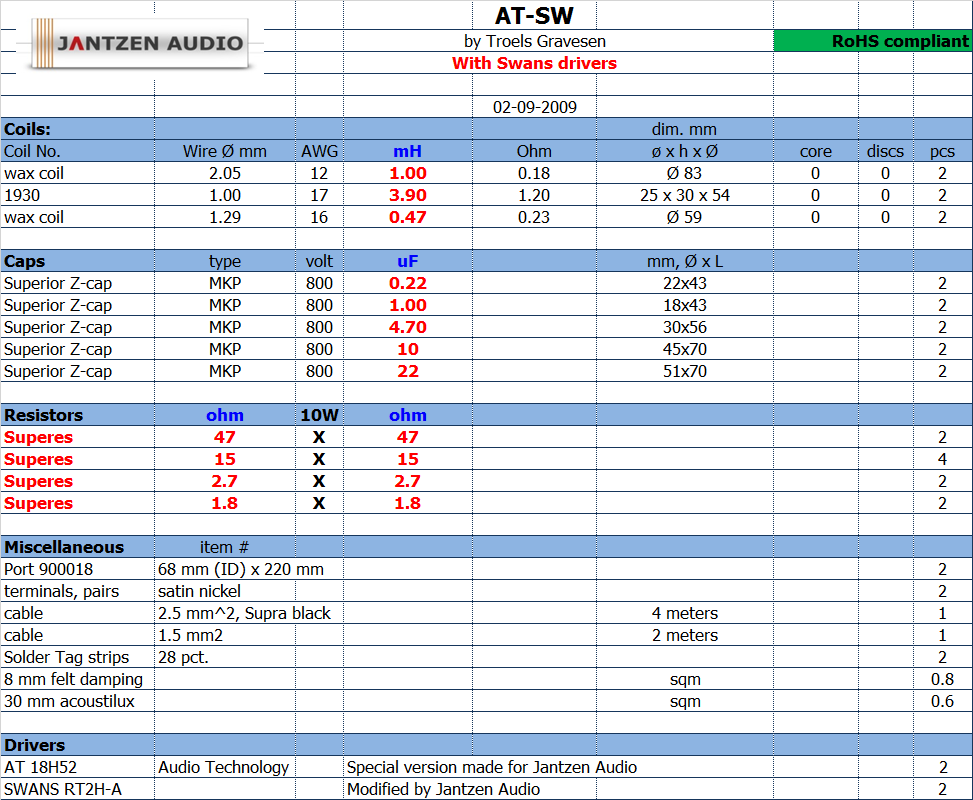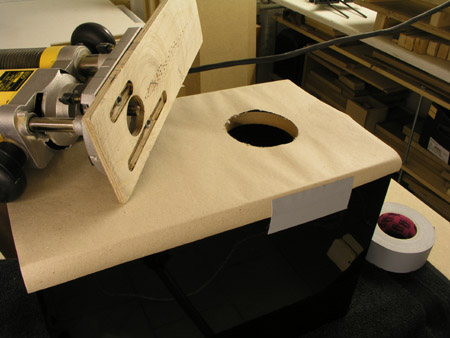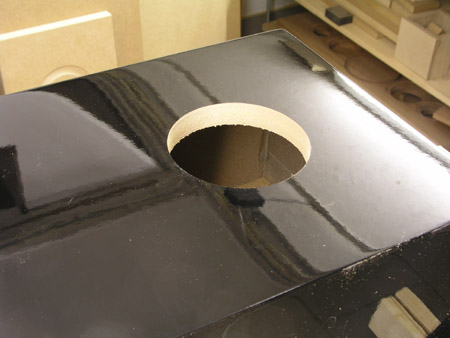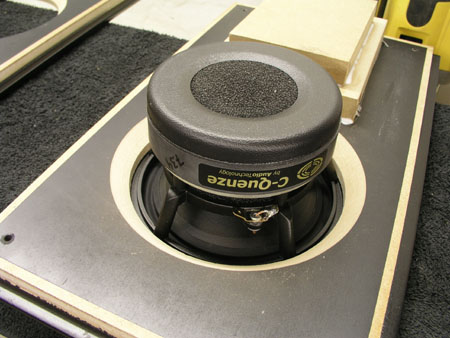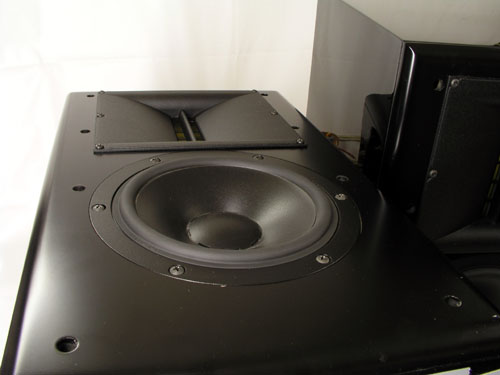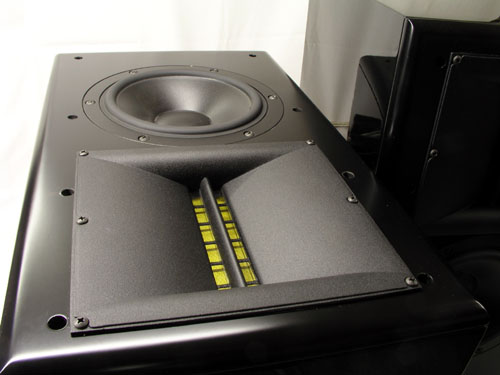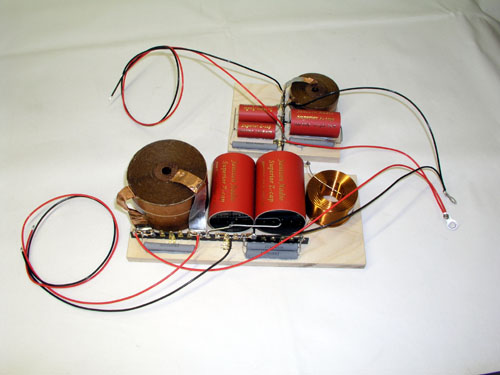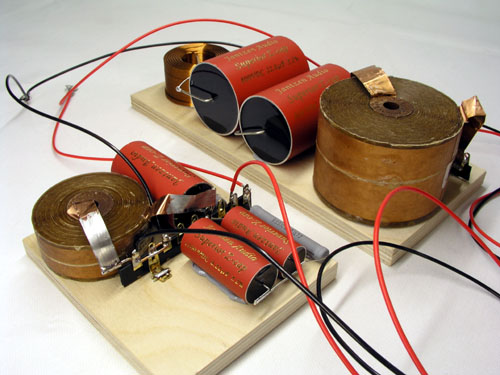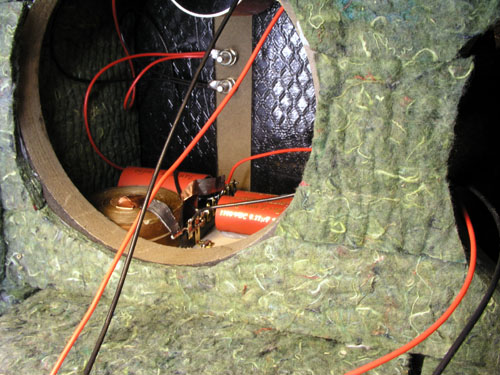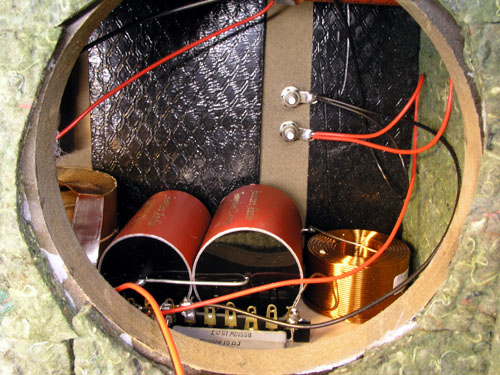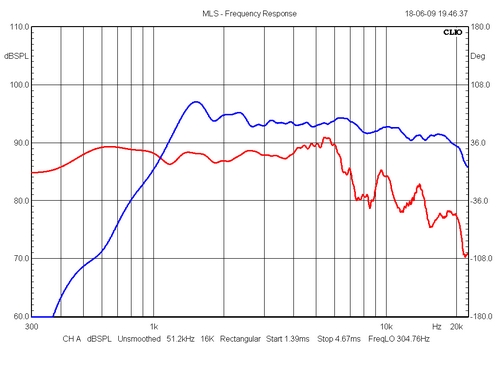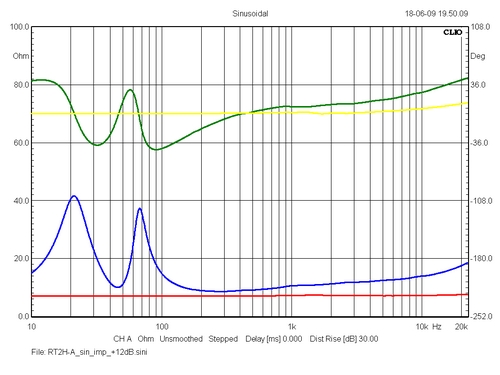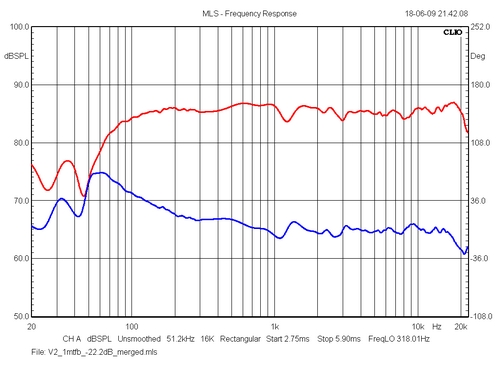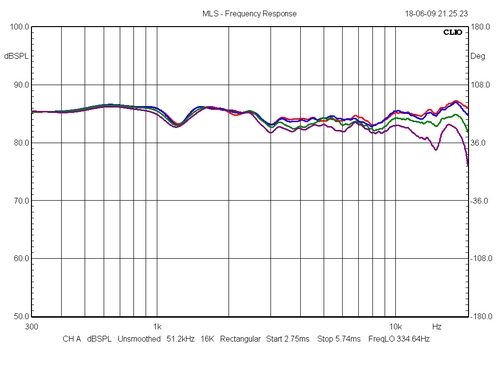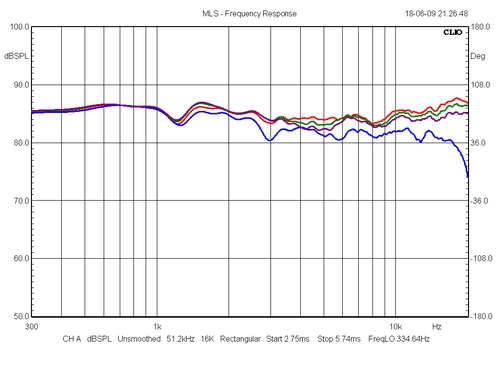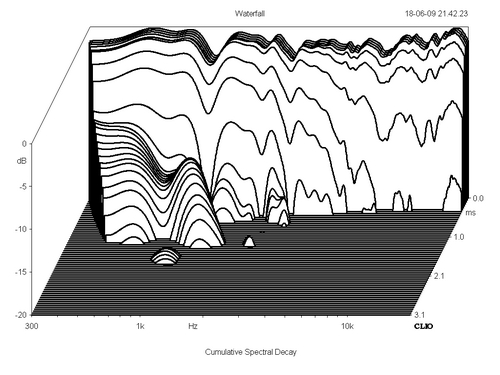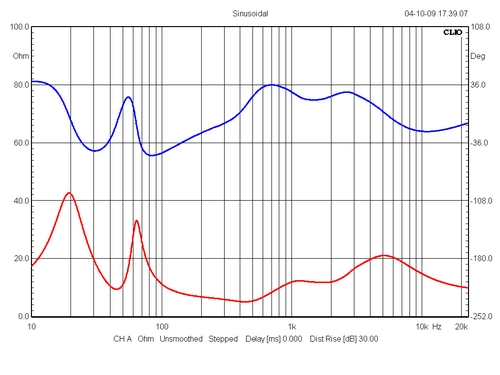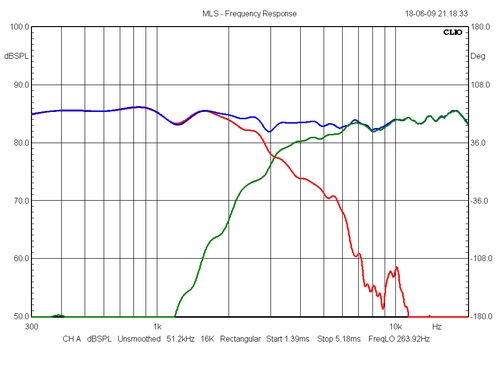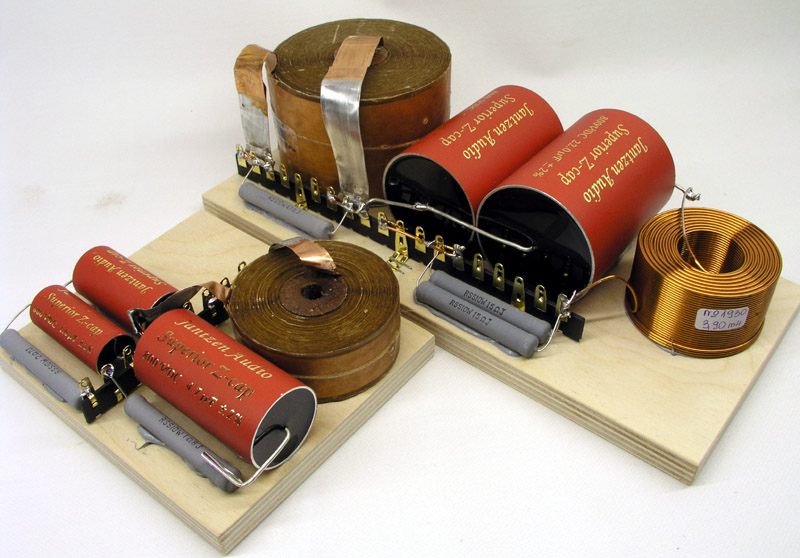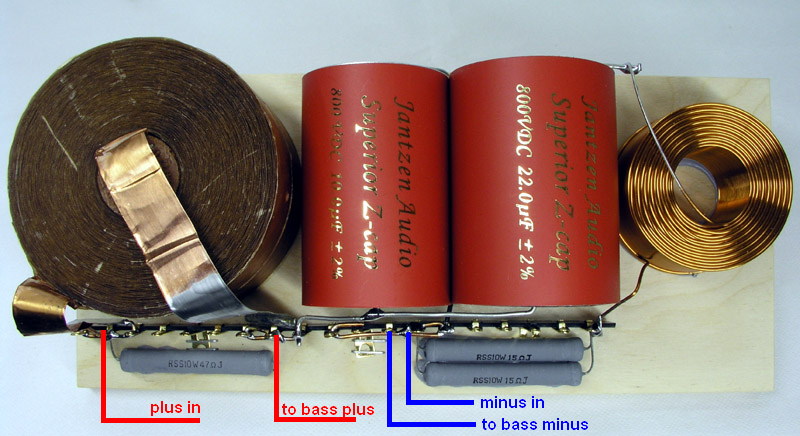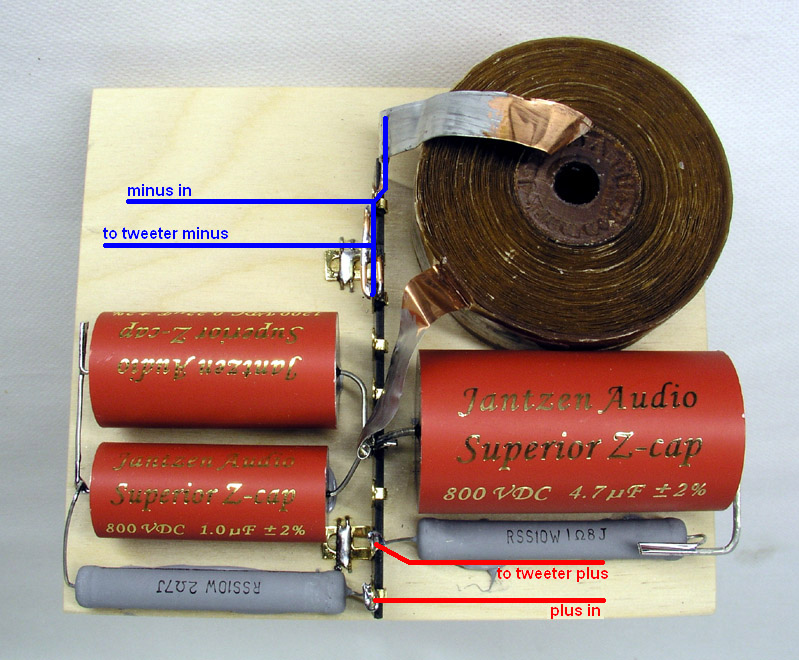|
DIY Loudspeakers: HOME INDEX UPDATES RESPONSE WHAT'S NEW
AT-SW Copyright 2009-20 ® Troels Gravesen Discontinued from Jantzen Audio. Buy components locally. CROSSOVER CABINET COMPLETE KIT MEASUREMENTS THE SOUND
|
|
The ambition
of this project is to offer a high-end kit that
even beginners in loudspeaker building can cope
with. Thus a two-way loudspeaker with
state-of-the-art drivers, a fairly simple
crossover and a cabinet that is easy to
construct. The cabinets must be rugged and well
braced, but it doesn't have to look nice to sound
good. The 18H52 driver used here
is made to my specifications and is
proprietary to Jantzen Audio. Do not buy a
standard 18H52-15-06 driver from AT. It is
different with regard to materials used and voice
coil impedance and the crossover shown below
won't work properly. The 18H52's copper clad
magnet pole-piece provides an almost flat
impedance profile and reduces non-linear
distortion. The chosen voice coil impedance makes
this construction well suited for valve
amplification although not for 5-10 watt SET.
25-40 watts PSE or push-pull is recommended
minimum. Obviously high-quality solid state
amplifiers may perform well too. Like all planar tweeters
the SWANS RT2H-A holds an extremely low moving
mass, and the large diaphragm coupled to a well
constructed die cast waveguide, makes excellent
horizontal dispersion. Like all planars, vertical
dispersion is limited and tilting the speaker a
little leaves a comfortable listening window. The
end result is speed, resolution and dynamic
integrity that leaves conventional soft domes
behind. Listening to cymbals and other
instruments with high frequency content, makes
you wonder whether you have ever heard something
similarly natural from conventional domes.
The basic characteristic
of this construction is transparency above all
and a surprisingly powerful bass considering the
size of the bass driver. A seamless integration
of drivers provides enhanced insight into the
music and the bass reaching down to 40 Hz
delivers a solid foundation for any source
material. The AT-SW kit provides sensitivity of
86-87 dB/2.8 volts/1meter. Cabinet dimensions are
250 x 450 x 325 mm (W x H x D) if you want to
build your own cabinets. US builders may use
PartsExpress #302-730 cabinet, e.g. piano black
finish as used for the prototypes here. Amplifier requirements: I have run these speakers with different amplifiers, from class B solid state to NFB single ended triodes and feel sure that AT-SW will deliver more and more the better the amplifier and associated equipment. The best sound I had was from my 5687 line stage and modified Audio Mirror mono-blocks, but 20 watts is on the low side unless you never play at significant sound levels.
Go to crossover layout and pics.
THE
COMPLETE KIT INCL DRIVERS
All technical questions to troels.gravesen@hotmail.com
Prototype made from PartsExpress #302-730 cabinet, black piano lacquer.
Silver plated cobber wire in teflon sleve
used. Setting up the speakers
Placement of speakers
is obviously for you to decide, but a few comments here on my
own experience on setting up the AT-SW speakers.
Setting up a 2-way speaker is in many ways trickier than most 3-ways, where the bass driver usually finds its place some 35-45 cm above floor level. This often provides a suitable room gain allowing a bass driver to gain a little extra weight in the lower octaves. For a 2-way we can't have the floor augmenting bass level as early floor reflections would compromise the midrange. Thus, a pair of stands is a must for the AT-SW speakers - as for any other 2-way in this category. Before making the final stands, make a pair of mockup stands from some MDF leftovers. Make them approx. 50 cm high, allowing additional height to be gained from adding books or whatever below the speakers or stands. Move the speakers around in your listening room and try to avoid having the same distance to floor and rear wall - not to forget side walls! In my listening room I always have speakers on the long side allowing some 160-180 cm to side walls. This may a bit of a luxury, but it solves a lot of problems. The worst placement we can have is the exact same distance to all three nearby boundaries. If we place the AT-SW midbase driver e.g. 65 cm to floor, rear and side walls, we will have some 4-5 dB extra at 50 Hz - but a 10-11 dB dip at 160 Hz and it sounds awful. Next to building your speakers properly, placement is second most important thing to consider. The sound from any good speaker can be totally ruined by misplacement. Also try tilting your speakers while sitting in your favourite listening chair. The tilt will depend on your height, your chair and the distance to the speaker. I find the best sound from the AT-SW by toeing in the speakers to listen almost on-axis while still being able to see inner side panels from my listening position. If you want to thoroughly evaluate the many hours going into your project, move the whole set to another room and hear what happens. Next, try various amplifiers and source material, CDs and vinyl set-up if available. I've recently compared the AT-SW driven from an "average" power amp (Rotel) and a 2 x 80 watts class A solid state amp (Jungson) and the test was devastating for the Rotel. Feel sure the AT-SW will deliver the details from the very best equipment available.
Basically it doesn't make much sense trying to describe the sound of a loudspeaker. What I hear is not what you or anyone else will hear. The way we perceive sound varies enormously and every well constructed loudspeaker may have something to offer that will please the ear - for some people. "The best loudspeaker in the world" is quite often read in loudspeaker ads. Obviously this is nonsense. The people who build it may think so, but other people may disagree. In the end it's a matter of taste. What is immediately apparent once you sit in front of the ATR is the lack of distortion, the smooth electrostatic treble and the surprisingly deep bass considering the size of midbass and cabinet volume. Despite the modest cabinet, this driver goes all the way down to 40 Hz, significantly adding to the perceived scale of the acoustic scenario. If you think polypropylene drivers may not be able to provide the same level of transparency compared to magnesium or ceramic drivers, try this AT midbass. The old ScanSpeak 18W/8543 driver was probably the best polyprop driver in the world in the early Nineties, but from personal experience this new AT driver is simply a lot better. The mineral filled polypropylene material used in AT drivers easily outperforms the old and softer ancestors. Where hard-cones need careful filtering to eliminate break-up nodes in the upper registers, we can get away with simple low-order filtering from this AT driver. The treble quality from this construction is where this speaker most noticeable differ from most other brands. If you know the sound of electrostatic loudspeakers, this is where you should seek brands for comparison, because "electrostatic" is what it is, and dispersion - although not as good as the best domes - is much better compared to what is usually experienced from fullrange electrostatics. Magnesium drivers will sound like magnesium drivers; ceramic drivers will sound like ceramic drivers and polyprop drivers will sound like - - polyprop drivers. Don't be mistaken here. Whatever material is used for speaker cones, they will all have their own distinctive way of reproducing sound. Hard-cones may sound slightly "clean and sterile" (Read: I miss the colouration of my old paper cones) and polyprop usually have been characterised by having a smoother and more forgiving sound (Read: It allows me to hear all my old and poorly recorded records). Due to the exceptional build quality of the AT midbass combined with the electrostatic quality of the planar tweeter, I think an exceptional good compromise is at hand. We can't have it all, but we can choose carefully to combine some of the best qualities of all technologies available.
|

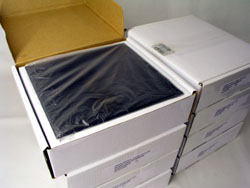
.jpg)
